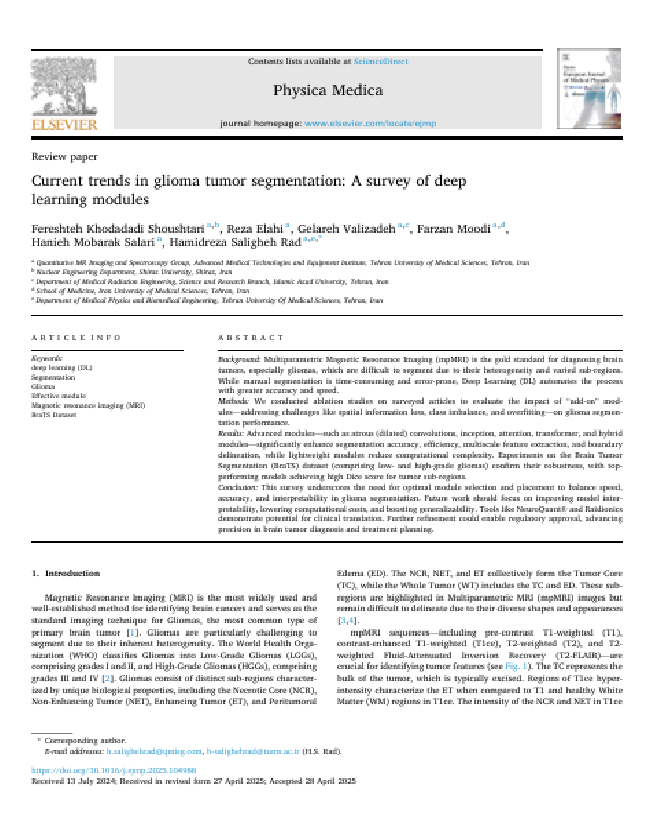Current trends in glioma tumor segmentation: A survey of deep learning modules
Abstract
Background
Multiparametric Magnetic Resonance Imaging (mpMRI) is the gold standard for diagnosing brain tumors, especially gliomas, which are difficult to segment due to their heterogeneity and varied sub-regions. While manual segmentation is time-consuming and error-prone, Deep Learning (DL) automates the process with greater accuracy and speed.
Methods
We conducted ablation studies on surveyed articles to evaluate the impact of “add-on” modules—addressing challenges like spatial information loss, class imbalance, and overfitting—on glioma segmentation performance.
Results
Advanced modules—such as atrous (dilated) convolutions, inception, attention, transformer, and hybrid modules—significantly enhance segmentation accuracy, efficiency, multiscale feature extraction, and boundary delineation, while lightweight modules reduce computational complexity. Experiments on the Brain Tumor Segmentation (BraTS) dataset (comprising low- and high-grade gliomas) confirm their robustness, with top-performing models achieving high Dice score for tumor sub-regions.
Conclusion
This survey underscores the need for optimal module selection and placement to balance speed, accuracy, and interpretability in glioma segmentation. Future work should focus on improving model interpretability, lowering computational costs, and boosting generalizability. Tools like NeuroQuant® and Raidionics demonstrate potential for clinical translation. Further refinement could enable regulatory approval, advancing precision in brain tumor diagnosis and treatment planning.

